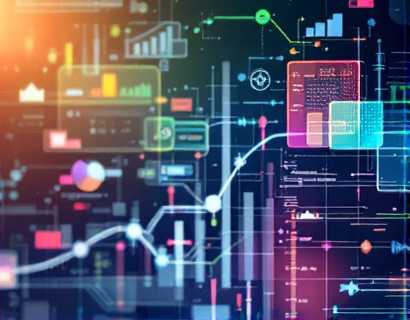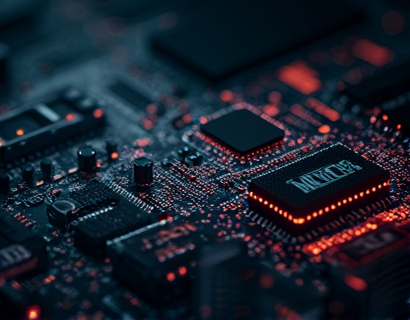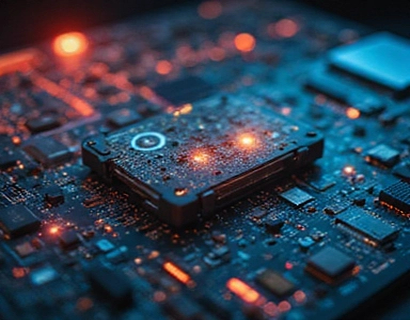Personalized AI-Driven Math Education for Kids and Young Learners: Transforming Learning and Building Future STEM Leaders
In the rapidly evolving landscape of education, the integration of Artificial Intelligence (AI) has opened new avenues for personalized learning experiences. One of the most impactful applications of AI is in the field of mathematics education for kids and young learners aged 5 to 18. This approach not only transforms traditional learning methods but also plays a crucial role in building confidence and fostering a passion for mathematics and STEM (Science, Technology, Engineering, and Mathematics) fields. By leveraging AI-driven personalized education, students can enjoy interactive problem-solving and engaging resources that cater to their individual needs and learning styles.
Understanding AI-Driven Personalized Math Education
AI-driven personalized math education is a sophisticated system that uses algorithms and machine learning to analyze a student's performance, preferences, and learning pace. This data-driven approach allows the system to adapt and tailor the educational content to meet the unique requirements of each learner. Unlike traditional classroom settings where instruction is often one-size-fits-all, AI can identify specific areas where a student may be struggling and provide targeted support to address these gaps.
The core advantage of this personalized approach lies in its ability to keep students engaged and motivated. By presenting challenges that are neither too easy nor too difficult, AI ensures that learners remain in their optimal learning zone, often referred to as the "zone of proximal development." This balance encourages students to push their boundaries and achieve more than they might in a conventional learning environment.
Interactive Problem-Solving and Engaging Resources
One of the most significant benefits of AI-driven math education is the incorporation of interactive problem-solving tools and engaging resources. These tools go beyond traditional textbooks and worksheets, offering dynamic and interactive ways to learn and practice math concepts. For instance, virtual manipulatives allow students to visualize and manipulate mathematical objects, making abstract concepts more tangible and easier to understand.
Gamification is another powerful element in AI-driven math education. By incorporating game-like elements such as points, badges, and leaderboards, these platforms make learning math fun and competitive. This not only increases student engagement but also motivates them to practice more, leading to improved skills and deeper understanding.
Building Confidence and Fostering a Love for Learning
The personalized nature of AI-driven math education significantly contributes to building students' confidence in their mathematical abilities. As students receive immediate feedback and see their progress over time, they develop a sense of accomplishment and self-efficacy. This confidence is crucial, as it encourages students to take on more challenging problems and persist in the face of difficulties.
Moreover, the engaging and interactive resources provided by these platforms help foster a genuine love for learning mathematics. When students find math enjoyable and relevant, they are more likely to pursue further studies in STEM fields. This early enthusiasm can have long-lasting effects, shaping future generations of scientists, engineers, and mathematicians.
Enhancing Academic Performance and Preparing for STEM Success
The impact of AI-driven personalized math education extends beyond just improving math scores. By strengthening foundational math skills, these platforms lay the groundwork for success in higher-level mathematics and related STEM subjects. Strong math skills are essential for a wide range of careers, from data science and engineering to economics and healthcare. Therefore, investing in personalized math education from a young age can significantly enhance a student's academic and professional prospects.
Research has shown that students who receive personalized math instruction tend to perform better academically and show greater interest in STEM subjects. This is particularly important in a world where STEM careers are increasingly in demand. By equipping students with a solid math foundation and a passion for learning, AI-driven education helps prepare them for the challenges and opportunities of the future.
Challenges and Considerations
While the benefits of AI-driven personalized math education are clear, there are also challenges and considerations that need to be addressed. One of the primary concerns is the digital divide, where not all students have equal access to the technology required for these platforms. Ensuring equitable access is crucial to prevent widening the gap between different socioeconomic groups.
Another consideration is the quality and accuracy of the AI algorithms. Educational content must be rigorously vetted to ensure it aligns with curriculum standards and educational best practices. Continuous monitoring and updates are necessary to maintain the relevance and effectiveness of the learning materials.
The Role of Educators and Parents
Despite the advanced capabilities of AI-driven math education, the role of educators and parents remains vital. Teachers can integrate these tools into their teaching strategies, using data insights to inform their instruction and provide additional support where needed. Parents can also play a supportive role by encouraging their children to use these resources and fostering a positive attitude towards learning math.
Collaboration between educators, parents, and technology developers is essential to create a holistic and supportive learning environment. By working together, they can maximize the benefits of AI-driven personalized education and ensure that all students have the opportunity to thrive in math and STEM.
Future Trends and Innovations
The field of AI-driven personalized math education is rapidly evolving, with ongoing advancements in AI technology and educational research. One promising trend is the integration of natural language processing (NLP) to provide more intuitive and conversational learning experiences. This could enable students to interact with the platform using natural language, making the learning process even more seamless and user-friendly.
Another area of innovation is the use of augmented reality (AR) and virtual reality (VR) to create immersive learning environments. These technologies can bring math concepts to life in three-dimensional space, providing students with unique and memorable learning experiences. For example, AR can be used to visualize complex geometric shapes or to simulate real-world applications of mathematical principles.
Additionally, the incorporation of adaptive learning pathways that consider not only academic performance but also emotional and social factors is an emerging area of research. By taking a more holistic approach, these systems can better support the overall development of young learners, ensuring they are well-prepared for both academic and personal challenges.
Conclusion
AI-driven personalized math education represents a transformative shift in how we approach learning mathematics and STEM subjects. By providing interactive, engaging, and tailored learning experiences, these platforms have the potential to build confidence, enhance academic performance, and inspire a lifelong passion for learning. As technology continues to advance, the possibilities for innovation in education are vast, promising a brighter future for students and the STEM fields they will shape.










































